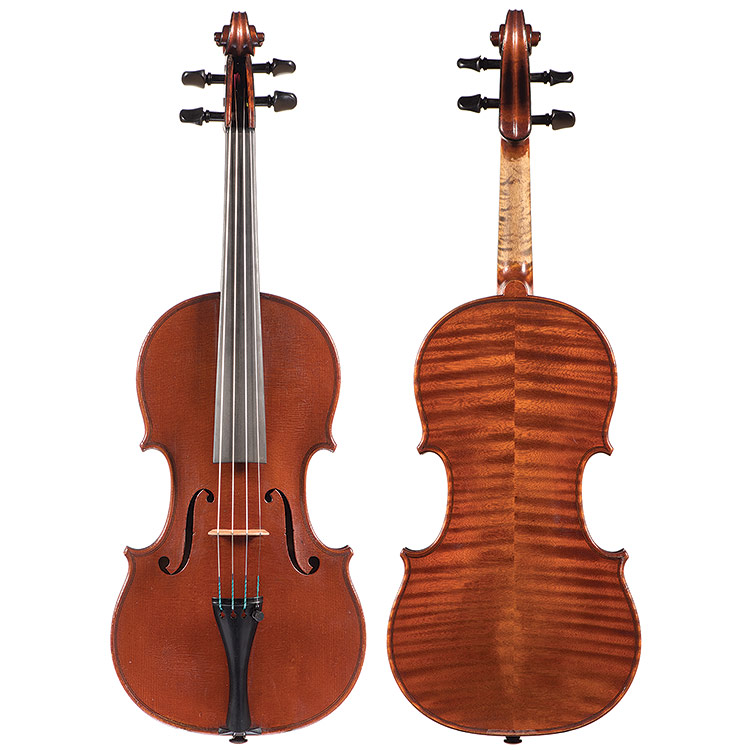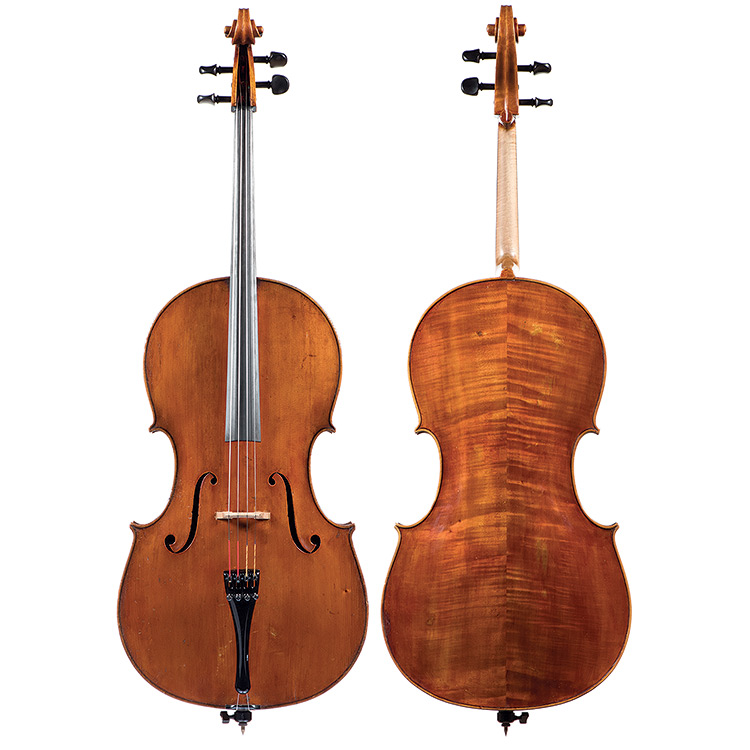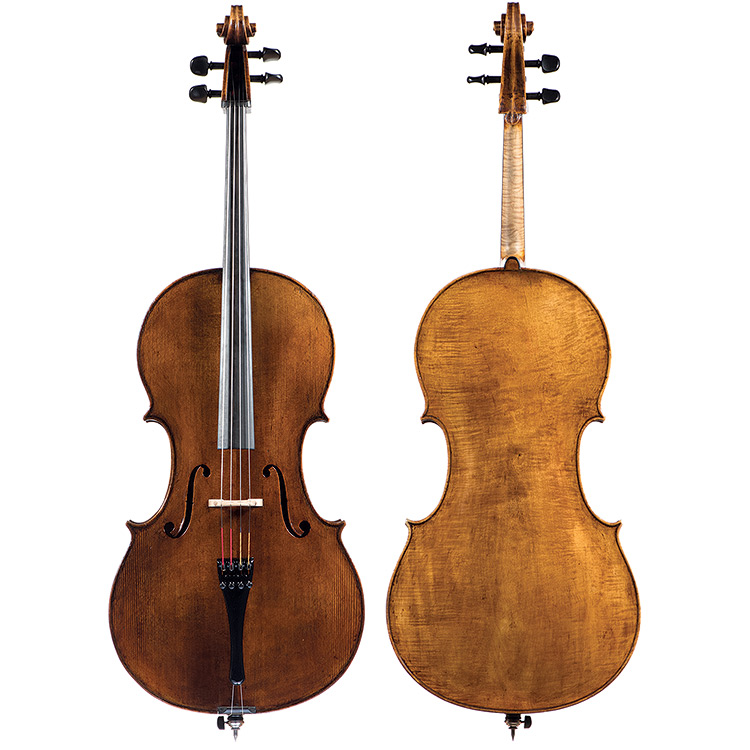
Featured Violin
Silvestre and Maucotel violin
About this violin
Silvestre and Maucotel | Paris 1911 | Length of back: 358 mm 4/4

Featured Cello
Gaetano Pareschi cello
About this Cello
Ferrara | 1940 | Length of back: 750 mm 4/4

Featured Cello
Romeo Antoniazzi cello
Romeo Antoniazzi (1862-1925) was from a long line of accomplished luthiers, Cremona's Antoniazzi family, which is at the heart of 20th-century violin making in Italy. He was taught by his father Gaetano and older brother Riccardo, with whom he worked at the shop of Leandro Bisiach. Throughout his career, he alternated working alone and for several firms, including Barlassina and Monzino in Milan, where he ultimately settled. He taught many apprentices while continuing to build his own instruments, some of which won awards in international exhibitions held in Paris and Turin.
He was known to use various labels and varnishes which ranged from light yellow-orange to dark brown. His instruments, which have become highly coveted and widely copied, were characterized by their spontaneity.
About this Cello
Length of back: 758 mm 4/4




